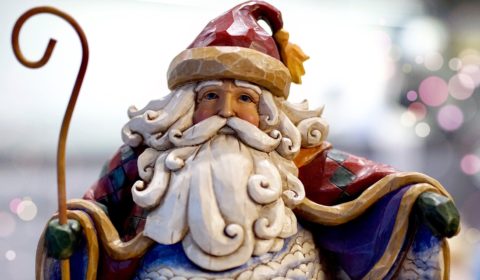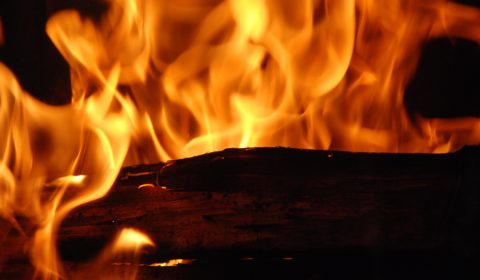
We got to talking today about different Christmas and winter festivals we know, and how they differ, not only from era to era but also from place to place. Being quite well travelled means we have a personal familiarity with a host of traditions, new and old (because yes, you CAN have a new tradition… it is what develops before it’s an old tradition, and it takes rigid aura of factuality for everyone to go and pretend that actually, it’s been there all the time!), and it gets really interesting when you get to comparing them to each other, and to historical evidence.
If you think we’re boring, just wait till I write about how we discuss films. 😉
If you DON’T think we are boring, then you probably have the anthrobug as bad as we do. XD
That aside, we have an interesting journey before us, so whatever you are doing, brace yourself for the somewhat lengthy post (just please have a designated driver if you’re reading this on your way to somewhere nice 🙂 ).
Practically everyone labours under two great mistaken notions :
A) that Christmas has always been there
B) that it always held the same importance and was always celebrated the same way.
*if you consider both popular culture and average person on the street, not to mention my own experience with informants on terrain, you will see what I mean immediately.

Of course, you couldn’t be more wrong. Christianity is a relatively new religion, and the famed (lengthy) Judaic roots themselves are debatable and disputable by archaeology. That is to say, the few certainties we have tell us only that at a certain time, in a certain place, there was a group of people believing a specific set of often related (but not necessarily fully) ideas – not more, not less.
This is how religions generally are, and I will not get into the lengthy debate on archaeology, pro et contra, enthusiastic Biblical archaeologists, propaganda from all directions, and so on. Suffice to say that there would be a lot to cover, but that’s not our aim here (and also, we are aiming for a way lighter topic than that!).
I would also like to say that this is not meant to insult anyone, Jews, Christians or anyone else… But accuracy is what science is all about, and while one’s belief is not lessened by the facts even if we accept the entirety of its basis as a socio-cultural construction, we cannot sacrifice fact for PC.
Christmas itself bases heavily on the pre-Christian traditions of by-gone eras. (cf. http://www.sacred-texts.com/time/crt/crt10.htm#Nanchor_7-8) Marking the passage of the year is at least as old as the great cultures of the Nile valley and the Near East – the Ancient Egyptians, Assyrians, Babylonians all knew calendars and arranged their holidays to reflect the different points of the year. (http://www.webexhibits.org/calendars/calendar-ancient.html)
That is the general consensus, though my own research has made me question this; while the overall theories go for the idea that planting has caused people to develop calendars, I would wonder whether or not that is correct from these reasons – one, that planting crops most likely did happen in some small way before (much like we get in the rainforest dwelling cultures, who pass from one clearing to another making gardens that they then abandon – I do believe that Mercader et al provide some very useful data on the process); two, times of year can often be unreliable – due to volcano eruptions, earthquakes, flooding and other natural phenomena, it is highly possible to plant or not plant in the wrong moment. I have observed that in two ways over the last few years in Slovenia, where sudden (and yet not so sudden, as it happens yearly now) bouts of bad weather and frost keeps making farmers lose crops and fruit and I have noticed the trees actually adapting to the pattern – the plums around the house I live in, for instance, have gone from an abundant flowering that lasted for over a month to a couple of weeks only, and instead of giving fruit for the entirety of the season, only a month or so is fruitful… this year, the fruit was barely there for a week before being gone, and much was spoiled before being even ripe. Trees have also become more likely to drop leaves sooner, to cope with drought and then the following swift oncoming of the cold, almost monsooinsh winter, and have two budding seasons, one in very early spring and one later, at the start of late spring/summer. These are phenomena that can be found in historical texts as well as material culture and palaeontological record, so this is hardly news to nature, and our ancestors had to be intelligent enough to notice this to survive – and yet calendrical year never corresponds to the actual environmental year, but tends to impose fallacies.
Three, as all the early calendars are connected to religious festivals, this has led me to believe that, rather than to mark the passage of time for the planting and any remaining fishing and hunting, the calendars were there in fact to preserve, promote and propagate the OCD-ish patterns of aura of factuality. All this is addressed in our oncoming book, so I won’t go into this further, but it is necessary to explain if I will go anywhere with this post today. 🙂 (cf. Ravenholm and Reid, Indoctrination and Maladaptations in Humans – An Introduction (tbc))
Religions borrow heavily from each other. And as their methods or patterns are very similar, it is perhaps not odd that Christianity, too, would borrow, like Judaic religion(s) before, from its precedents. Have you ever considered that the deeds of Heracles (better known as Hercules in his Roman form) are the spitting image of those of Samson, among others? And that the twelve apostles roughly correspond to the chief gods of Greek pantheon? Madonna and Child are represented way earlier by Isis and Horus? And so on and on.

Current Christmas is a concoction of many traditions. In Medieval Era, Christmas was perhaps more secondary to Easter (http://www.medievalhistories.com/medieval-christmas-ad-336-c-1400/), and its importance was perhaps as social as it is today, rather than strictly come church the way Easter would have been. Its significance would have been that of spending time with family and friends, something that the modern era has probably anchored very strongly on due to the passage of two world wars – not perhaps as lengthy as some wars human history has seen, but long enough, and both significantly strong on family time – with soldiers spending time at home when possible, and when not even spending time with each other cross lines of animosity.
The twelve days of Christmas are well-known enough in Anglophone culture, translating into many others. We are talking about the passage of the last days of this year’s winter and the onset of the calendrical (not actual) new year. Today, most people recognise and celebrate the 31st as the start of the new year, and the celebration can be equal or even more important than the celebration of Christmas. In Netherlands, Christmas is almost overlooked – possibly due to Protestant tradition, which often did away with many of the usual Catholic ones – in favour of the festival of St Nicolas on the 6th, though apparently many, when they learn that “there is no Saint Nick” switch to celebrating Christmas in a more usual fashion. (https://en.wikipedia.org/wiki/Sinterklaas, accessed on 28/12/2017)

Santa Claus (a derivation of the words Saint Nicolas) is replaced by a different, probably older, tradition of baby Jesus (Christkindl) in Germanic lands; and a Russian (as well as communist era celebrated Yugoslavian neutral) tradition recognised a similar masculine figure, in Slovenia known as “Dedek Mraz” (Grandpa Frost); I am told that he became celebrated post the war, when many pre-existing Christian traditions had a bad rep due to the pro-nazi behaviour of the Church (both locally and otherwise, as the Vatican did not do well in those times *this has since been subject to massive revisionism), and is, I would argue, a concoction of the Christmas tradition with the figure of an elderly male (i.e. St Nick) further joint with the traditional celebration of the official end of the year.
A burning log is still used as an addition or substitute for Christmas tree in some parts of the Slavic lands, as well as, I believe, in Catalonia (https://en.wikipedia.org/wiki/Ti%C3%B3_de_Nadal) (only they do not set it on fire). That would be the yule log of Anglo-Norman lands.

The Christmas tree itself (also known as the Tannenbaum) is a 19th century tradition derived from the Germanic lands, allegedly first observed in Livonia and Germany (Perry, Joe (27 September 2010). Christmas in Germany: A Cultural History. University of North Carolina Press)
It has since made a tour of the world.

Christmas and the associated winter time is otherwise recognised by decorations, different assorted festivities and foods. Pandoro and panettone are probably both well known harbingers of the Christmas time, as well the yule log and the famous (or infamous) British Christmas pudding, the preparation of which requires months of preplanning. The fruit cake, possibly a derivation of the simnel bread and wastel cakes of almost a thousand years ago (themselves probably derived from the treats and nibbles of the Roman times and further back), is another hallmark of Christmas time, and definitely present at least by the Christmas dinner, but often throughout or especially for the supper of the 31st (depending on the dish and the people celebrating).
Chocolate has become another part of it, and Lindt’s advent calendars and different Christmas shapes are a must for many. Oranges, nuts and dried fruit (the nuts and fruits forming the “Treize deserts” in France), have long been a part of this end of winter.

So what’s in it for us as anthropologists? Apart from a very satisfying time if you are a good participant observer (as in, you get to try the yums… 😉 ), we can learn two things.
One, much like Flood (1996, An Introduction to Hinduism) has mentioned about India, there is an overarching socio-religious structure.
Two, staying with Flood, the traditions and behaviours differ from village to village, country to country, even when the nominal overarching tradition is still the same.
Traditions themselves change. They come and go, become intertwined with other ideas, are lost and reinvented all the time. But whatever you personally do and believe, if anything, you can go on doing it freely because awareness of how young traditions can be and how very much they can change helps keep that diversity when naysayers accuse you of “doing t wrong”. Chances are that things were indeed different when your grandparents were children; but there’s a very good chance that things changed subtly for your parents’ time, and that your great-grandparents would be confused and/or scandalised (dealer’s choice really 🙂 😉 ).
Next time – Winter holidays around the world – we’ll look at different celebrations and different religions more thoroughly than we did today. 🙂
Picture sources – Pixabay
